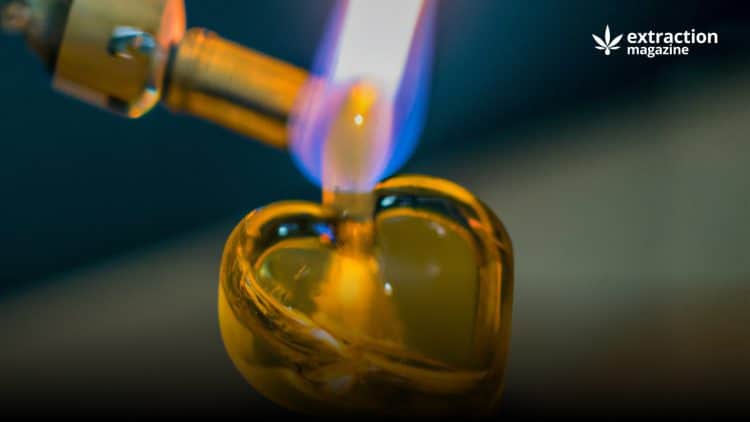In recent years butane extraction has become a prevalent method to separate cannabis constituents to create products containing tetrahydrocannabinol (THC), cannabidiol (CBD), terpenes and flavonoids. Since butane is a non-polar solvent, unwanted compounds such as chlorophyll are less likely to be extracted.
Due to this, it’s often referred to by growers as one of the cleanest and efficient extraction method, but it is not without risks.
Unfortunately, using butane to extract hash oil is extremely dangerous because butane is a highly volatile and flammable gas. When misused during hash oil extraction, it can cause explosions leading to numerous risks. Countless butane explosions have occurred during hash oil extraction endeavors at cannabis oil labs in the last few years.
Here we’ll discuss these risks and the BHO extraction process to give you an idea of what could go wrong.
The Risky Open-Blasting Butane Hash Oil Extraction Process
The butane hash oil extraction process has become commonplace despite what you might have been led to believe.
This extraction process is simple and easy to learn, doesn’t cost a fortune, and the final products can be obtained easily. One reason it’s dangerous is that most people are able to learn how to complete this process online.
Ultimately, the butane hash oil extraction process might be easy to learn, but it’s risky, and before you can learn the risks of butane explosion, it’s an excellent idea to understand how this process works. Have a look at our brief list detailing the butane extraction process below:
- An extractor tube is bought or made at home out of 1.75” diameter and 1” long PVC piping, steel piping, or glass piping. Also, end caps are needed if steel or PVC piping is used. Once the piping has been constructed by following an open blasting diagram, the finished appearance should resemble a ‘pipe bomb.’
- Once the extractor tube is created, a filter will be added to the bottom of it. The tube will be filled with cannabis, and butane will be injected into the top of this tube. This act will allow a resinous or oil mixture of cannabinoids to be extracted.
- After a while, the hash oil will collect at the bottom near the filter. It will then be heated to evaporate the remaining butane and thus purify the end product. Some people allow the hash oil to drip into a plate or pyrex dish. They do this so that the oil can be heated and the butane evaporates faster.
So how exactly is the above process dangerous? Simple. This process involves a flammable and explosive solvent (butane), so the potential hazard of fire and explosion is significant.
Unfortunately, most extractors complete this process indoors, where unventilated spaces with gas stoves and pilot lights are ignition sources for vapors.
The Risks Of Butane Explosion During Hash Oil Extraction
Now you know how BHO extraction is completed and why it’s dangerous, we can detail a few of the risks. See below to learn the key risk factors associated with butane explosion during hash oil extraction:
- With illicit BHO extraction labs on the rise, numerous American communities have experienced increased structural explosions related to extraction operations.
- When a hash oil lab explodes, structural damages occur, and this can lead to serious injuries to firefighters, innocent bystanders, and hash oil manufacturers.
- Butane is a solvent heavier than air, colorless, odorless, and has a flammable range of 1.8 to 8.4 percent. This means it often cannot be smelt or seen before it’s too late.
- When a butane explosion occurs during hash oil extraction, windows and doors can be blown off frames, sheetrock lifted from ceilings, and walls can be blown off foundations.
Additionally, firefighters have claimed that exploding butane canisters can cause fires to be more intense and thus challenging to extinguish. Butane explosions also lead to people in the vicinity suffering severe burns, resulting in permanent injuries and fatalities.
How To Prevent Butane Explosions
In order to avoid explosions during the butane extraction process it is recommended to perform the extraction in a well-ventilated room or even better in a laboratory equipped with alarm systems in case of solvent spill. Open-loop systems will saturate the room faster, but closed-loop systems recycle the gas and control how it is extracted.
Moreover, the extraction equipment should be cleaned and checked after each run to ensure its integrity. The person working with flammable gas should be trained to handle dangerous substances and all the precautions should be taken to avoid risks of butane explosion, including an excessive solvent heating or uncautious sparkles near the extraction rooms.











